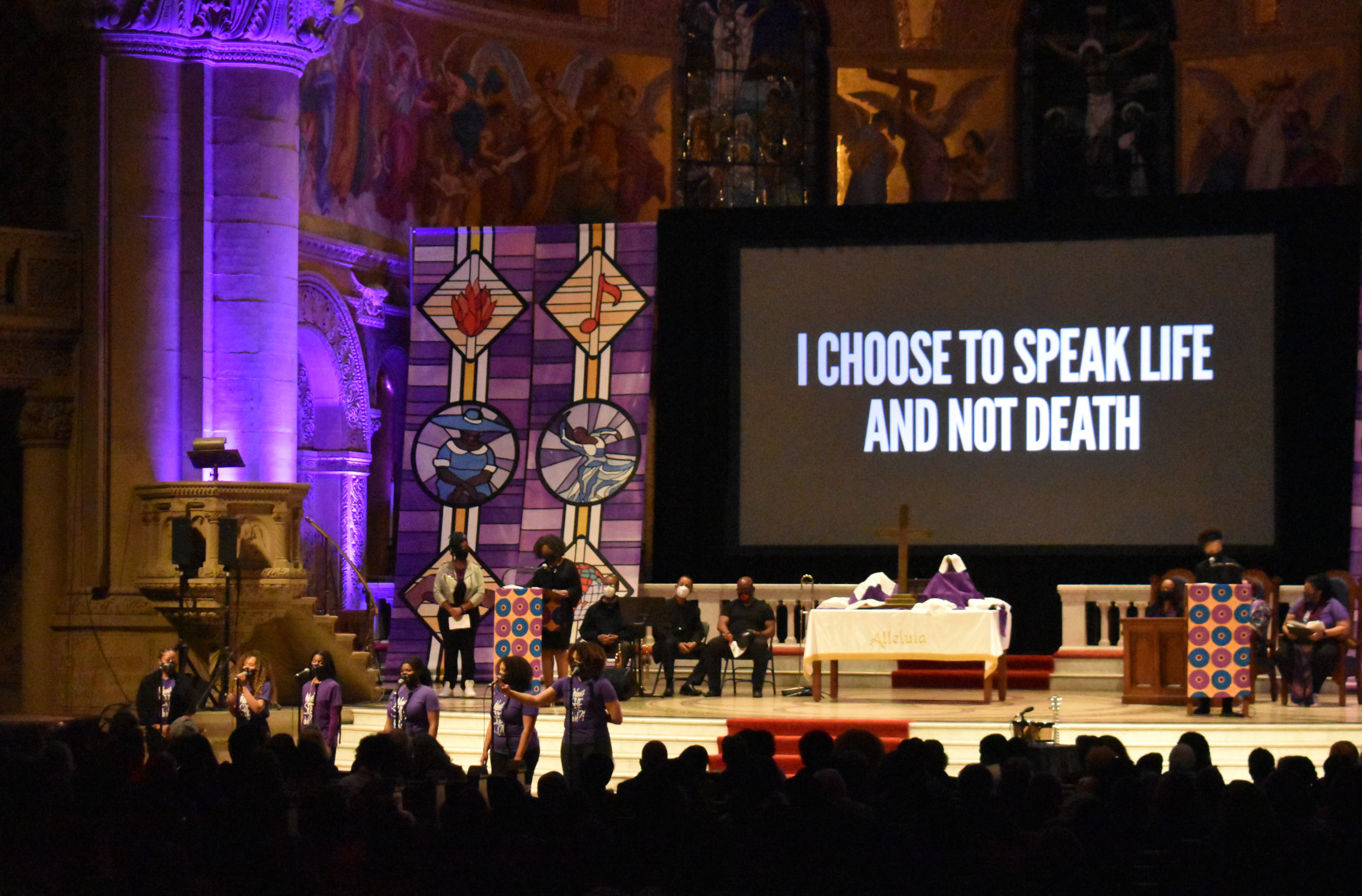Looking back on Black History Month at Stanford, several Black students said that they enjoyed building community through student-led events. Some, however, added that they wanted to see more University support for Black students and events held during the month.
The month included Stanford-sponsored events like the Beyoncé Mass and programming hosted by the Black Community Services Center (BCSC). Black History Month, which is celebrated in February, was first celebrated in 1970 and presidentially-recognized six years later.
Arielle Williams ’22, co-president of the Black Gender Marginalized Collective (BGMC) described Black History Month as “always a really active time,” thanks to student-organized efforts.
“I think it’s also really beautiful that Black History Month coincides with the month of love and Valentine’s Day,” she said. “I’ve always associated it with very good vibes and a lot of pride being a Black woman.”
Throughout the month, the BGMC hosted events like their weekly Lunch n’ Learns, in which students of various backgrounds came together to discuss issues of importance to the Black community, including racial capitalism, prison abolition and misogynoir. In collaboration with the Black Student Union (BSU), the BGMC also hosted an R&B party during Valentine’s Day weekend.
“When I think of Black History Month, I think the most impactful things almost always come from students,” Williams added. “You could probably say that about any movement, it almost always starts with the students.”
On the other hand, from the University, Williams said that she is not looking for a “platitude,” but rather to “see their support of Black institutions on campus.”
“I think an email is great, but I also think University support and departmentalizing the [African and African American Studies (AAAS)] department is something that’s a very ‘Happy Black History Month’ to me, even though that happened a few months ago. It’s things like that that make me very happy about the University’s commitment to Black students on campus,” Williams said.
Other students also wished for more material support and commitments from the University. Kallie White ’24 said she felt “indifference” about the University’s response to Black History Month.
“It’s almost expected to see the gray and white photos, kente cloth in the dining hall and Black History Month signs around campus” she wrote in an email. “I’m tired of seeing the same photos and tired of hearing the same speech of how Stanford tries to embrace equality. The University displays these acts and old photos to meet a bare minimum but does not hear and act on the grievances from the Black community.”
Students in the past have called for reforms such as the departmentalization of the AAAS department, the University’s condemnation of right-wing advertisement campaign targeted at a professor and the investigation into an incident at the Graduate School of Business in which racial slurs were written on two dorm doors.
Despite her frustration with the University’s response, White said she enjoyed attending the Black Liberation Month Pop Up Shop, which was hosted by the BCSC and the AAAS department, and a mental health check-in event.
“These two events provided purpose because we often look at the history and injustices faced, but I think what these two events provided was staying grounded by the past but looking forward to the future. The future of Black-owned businesses, Black people thriving, and Black joy,” White wrote.
Various other student organizations held events with similar themes.
Kristen Jackson, a second-year Ph.D. student at the Stanford Graduate School of Education and social co-chair of the Black Graduate Student Association (BGSA), said that the organization held a costume party and regular weekly hikes focused on “centering Black joy” as part of their year-round goal to “amplify Blackness.”
Like other students, though, Jackson also said she wanted more acknowledgement from the University.
“I would have loved to see more from my school, the school of education, who did not celebrate in a manner that felt authentic, or really at all,” Jackson said. Brooke Donald, associate dean for communications and public affairs at The Graduate School of Education did not immediately respond to a request for comment from The Daily.
“I live in Black skin all the time, so I acknowledge and uplift Blackness all the time,” Jackson added. “Black History Month actually isn’t for me. It’s for everyone else to acknowledge and center, in wholly inadequate ways, Blackness and Black people and Black joy intentionally during the month of February.”
Because of this, Jackson said she was frustrated by the lack of a University email acknowledging Black History Month. “The minimum is an email, and I honestly think it’s offensive that the minimum didn’t happen,” she said.
In a statement to The Daily, University spokesman E.J. Miranda pointed to an email sent to the Stanford community through the Stanford Report on Feb. 1, which shared more about campus opportunities during the month.
“Stanford strives to ensure that our university is a place where all members of our community are supported and thrive,” Miranda wrote. “By delving deeper into the history, culture and achievements of the Black community, we can increase our understanding of this country’s past and current issues around race and work to eliminate anti-Black racism.”
Though students hope for more support from the University in the future, many are optimistic about the direction in which Stanford is heading.
“I think when students feel like they are seen and heard and that the places on campus are designed for them are supported by the university level, I think that speaks volumes,” Williams said. “And in my experience over the past four years here, I have seen the University trend in that direction. I think there’s still more work to do, but we’re going in the right direction.”
